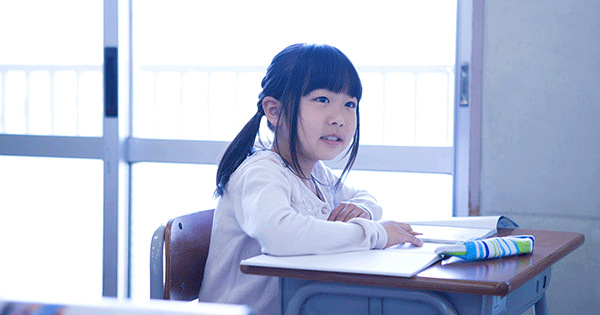
How do you get a classroom full of energetic little kids to practice stillness? Believe it or not, it’s possible. Mindfulness isn’t new, but it’s undoubtedly become a popular classroom movement in recent years. What is it? According to Psychology Today, “mindfulness is a state of active, open attention on the present.”
This can happen in a meditation practice where the object is to bring one’s awareness to a singular focus for a sustained amount of time—like say, focusing on your breathing for five minutes. If your thoughts wander, that’s okay. It’s normal. The idea is to gently bring your mind back to that focus, and over time it becomes easier to maintain that focus for longer lengths of time. Mindfulness is also about learning to pause and check in with yourself regularly. It’s a metacognitive process that can keep you grounded in moments of stress, instead of reacting impulsively.
Why teach mindfulness?
When we teach young learners to be more aware of their emotions, surroundings, and decisions, we help them become more purposeful in their responses and actions. Research on mindfulness shows that it helps students with attention, emotional regulation, compassion, and calming, according to Mindful Schools. When a child is feeling frustrated, mindfulness can teach them how to stop and assess their mood. They can ask themselves questions like: Am I confused? Hungry? Tired? Do I need to take a breath? Ready to get started? Here, we’ll offer practical mindfulness exercises you can use in your classroom anytime.
Stillness Challenge
Supplies: timer, calming music poster (Optional)
You may not be able to just ask a room full of children to sit in lotus position for 30 minutes of blissful stillness, but you can slowly build a meditation practice over time. Start small and set a timer for two minutes. Perhaps turn off the lights and have some calm music on hand. Ask students to find a cozy spot and to sit comfortably. Tell them that together you are going to start a new stillness challenge and each day you’ll see how long it can go. Track your meditation progress on a poster. The object of the challenge? To keep your eyes closed, sit in stillness and to focus on breathing slowly. Encourage students to avoid talking and fidgeting. They should attempt to sit as still as possible and if their thoughts wander, instruct them to kindly bring them back to the breath. The timer will go off when two minutes are up. Take a nice stretch and debrief how it went. The next day? Try three minutes!
An idea for special needs students who perhaps can’t sit still:
Have your student sit where they can place their fingertips on the desk or their knees. Starting with the thumbs, tap each finger on the table to count in the breath—inhale 1-2-3-4-5 and then to count out the breath—exhale 1-2-3-4-5. This can also be done by raising arms or lifting feet off the ground with each breath.
Mindful Eating
Supplies: timer, candy or raisins
First, choose your edible. A piece of candy (like Skittles or Hershey’s Kisses) or a raisin works. Set a timer for two minutes. The idea is for students to close their eyes, holding the object in their mouth and focusing on it without chewing. Let’s say it’s a Hershey’s Kiss. For three minutes, students should focus on the candy melting in their mouth slowly. If their thoughts drift, they should simply bring them back to the candy. They should focus on the sensory experience—the taste and feel of the object. Doing so provides a tasty focal point for the mind and builds the capacity for stillness and mindful focus.
Breathing Buddy Meditation
Supplies: timer, calming music, stuffed animals or tennis ball
Have students lie down. Each student should get a stuffed animal or tennis ball to rest on their stomach. Set a timer, and for your determined length of time, students should close their eyes, taking slow deep breaths while balancing their stuffed animal or ball on their stomach. If the object falls off, they can simply put it back and keep breathing. The object is to keep the focus on the breath and to balance the object for the given time.
Sensory Challenge
Supplies: timer, calming music
This can be done anywhere—inside the classroom, on the playground, or on a field trip. Ask students to sit comfortably and close their eyes. Take a few deep breaths together and then offer the following prompts.
- For 30 seconds, focus deeply on what you can hear. Even the smallest noises.
- For 30 seconds, focus deeply on what you can smell.
- For 30 seconds, focus deeply on what you can feel.
- Open your eyes and look up. For 30 seconds, focus deeply on what you can see.
Sound Focus
Supplies: timer, bell, singing bowl, singing bowl app
Ask students to sit comfortably and close their eyes. Using a bell, a Tibetan singing bowl, or tuning fork (or a video/app of any one of these), play a robust, reverberating tone. Ask students to breathe quietly, and listen intently to the sound as it fades. When they can no longer hear it, they should put their head down. You can repeat this a few times.
Body Scan
Supplies: A Body Scan Meditation
A body scan is a guided meditation that takes students through a head-to-toe scan of the body. Students should sit or lie down comfortably. Listening to the audio, students should follow the cues to breath and relax the body muscle by muscle. This practice can help students learn to assess tension and use their breath to release it and its especially helpful for students with sleep problems.
Want more information on bringing mindfulness to your classroom?
Check out these resources!
Sitting Still Like a Frog: Mindfulness Exercises for Kids (and Their Parents)
Categorized as: Tips for Teachers and Classroom Resources
Tagged as: Early Childhood and Elementary (Grades: PreK-5), Early Childhood Education
